
PREV ARTICLE
NEXT ARTICLE
FULL ISSUE
PREV FULL ISSUE
QUERY: A POSSIBLE U.S. PATTERN COIN?
Dick Grinolds submitted these thoughts on an interesting piece that may or may not be some sort of U.S. pattern coin. Thanks!
-Editor
I was doing a quick preliminary sort of a very large mixed lot of tokens and world coins when I spotted an unusual bronze piece and put it aside thinking that it was a modern world coin that I hadn't seen before. After a couple more days of sorting I started cataloging what I had pulled out and eventually ran into this piece again. Immediately it was apparent that it was not a world coin but it did start the wheels turning as it looked familiar to me. I recognized the arms of Pennsylvania on the reverse but since I am not a mainstream U.S. coin dude the nonsensical legends on the obverse made me grab my copy of ‘Magicians Tokens And Related Items” by F. William Kuethe Jr. which lists a number of tokens with gibberish legends. After having no luck with that catalog, I headed to my “go to” online favorites, the Heritage Auctions archives and the Newman Numismatic Portal.
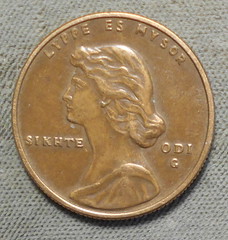
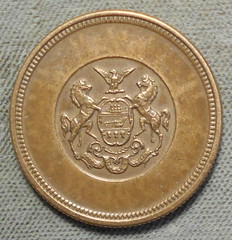
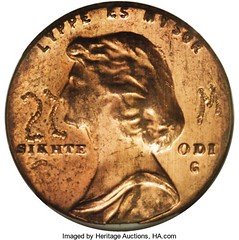

General Motors Roller Press Cent pattern As soon as my search of the top legend (Lippe Es Mysor) came up, the “duh” alarm went off in my head as I recognized the obverse as that of the GM roller die pattern cent (Pollock-4060) with which I am somewhat familiar. That search solved my initial identification problem but as I reviewed the materials that I found it also added more questions than answers. Since I was headed out to the June Long Beach Expo the next day, I decided to take the piece along and get some experienced opinions from people I trust. I first showed the piece to John Dannreuther (JD as he is known to all), a casual friend who has always been very helpful when I've had other questions about U.S. coins, patterns and related items. JD studied the piece then noted the size (26mm, 7.4 grams) which is much larger than the GM roller die cent patterns (19.1mm) and the completely different reverse. He also noted the lack of scratched in letters and numerals, roller die position notations, which occur on most if not all of the cent sized GM patterns. JD said he had never seen the piece before and asked if he could send images to Saul Teichman at uspatterns.com. Saul's reply indicated that he had never seen the piece either. JD suggested that I show it to Fred Weinberg who has also been good about sharing his knowledge with me in the past. Fred also took some time studying the piece, noted the same differences, then gave me a very technical but clear review of the piece concentrating on the edge reeding - what he refers to as “the reeding within the reeding” – and the shape and details of the dentiles (denticles). He said that neither detail would preclude the piece from being a U.S. Mint strike. He also had never seen the piece before. Fred's tablemate (sorry, but I didn't catch his name) then looked at the piece and found something that everyone had overlooked up to then – it appears to be struck on a clad planchet.
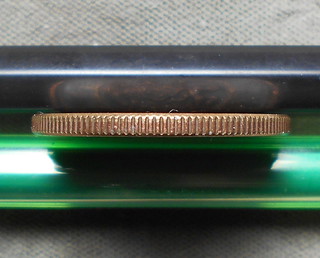
The reverse is where I could finally add something to the discussion as I had recognized the Pennsylvania coat of arms from the start. That center portion is used on the reverse of Julian CM-42, the Pennsylvania Bicentennial commemorative featuring William Penn (“Medals Of The U.S. Mint, The First Century 1792 – 1892” by R.W. Julian). The CM-42 medal includes the reverse legend “Distributed By Employees Of U.S. Mint During The Celebration Of Pennsylvania's Bicentennial Oct. 24 1882” in an outer ring around the arms in the center. The medals were actually struck on a steam press on a wagon pulled by six horses in the bicentennial parade with the medals then thrown to the crowd. Medals honoring President Grant (Julian CM-18) were struck and distributed in a similar manner three years earlier in 1879 during another parade. Because of the similarity in design, size and time period, I have always thought that the Julian CM-42 and Julian CM-18 reverses were made from a two-part die although I don't recall seeing that mentioned anywhere in the literature. This piece may confirm my observation as the Pennsylvania Bicentennial CM-48 in the modern yellow bronze composition was still available for purchase from the U.S. Mint at least up to 1969 (Mint List No. 613). That means that the CM-48 dies (more likely their younger brothers) were still available for other uses (such as this piece) during the 1960s. CM-18 and CM-42 are both 25mm in diameter as are the 20th Century strikes (Julian is in error on CM-18) but my piece is 26mm. The coat of arms is 15mm in diameter on all the pieces so apparently that available die part was used on a new reverse die to strike this 26mm piece, omitting the outer wording band.
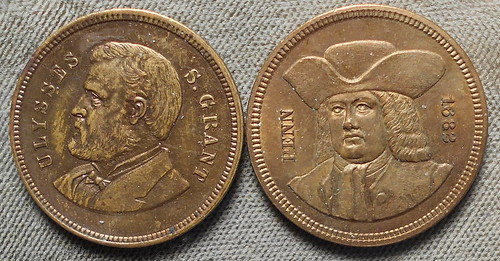
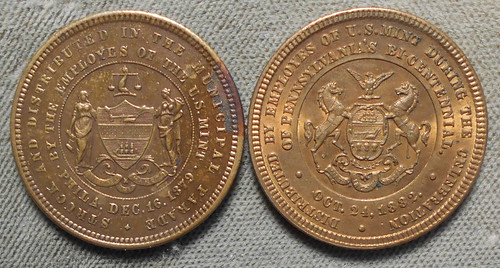
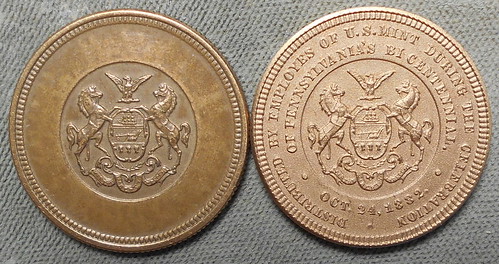
That is where things stand right now with many questions still unanswered. Is it a U.S. Mint product as the evidence so far tends to indicate? Is it a pattern and if so, for what - clad coinage, a small dollar coin, a world coin, a pressure or other test piece? How does it fit with the GM roller die cent or are they not related beyond sharing an obverse motif? Is the medal center piece on the reverse meaningful or just an on-hand die to use for balance opposite the obverse die for trial strikes? Is it a “pattern of a pattern” as someone suggested only half in jest? One thing that JD, Fred and I agreed on is that sharing the piece with the E-Sylum readers presents the best chance of gaining further information. I will have it at my ANA table in Denver for the first two days of the show.
So dear readers, any thoughts? What do you make of this?
-Editor
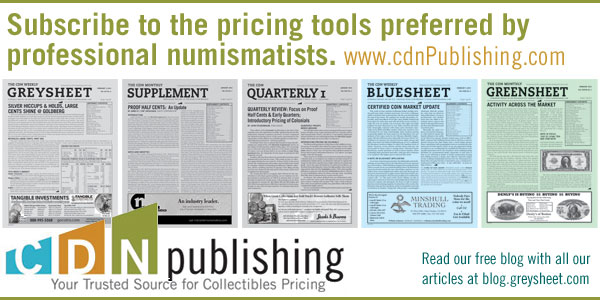
Wayne Homren, Editor The Numismatic Bibliomania Society is a non-profit organization promoting numismatic literature. See our web site at coinbooks.org. To submit items for publication in The E-Sylum, write to the Editor at this address: whomren@gmail.com To subscribe go to: https://my.binhost.com/lists/listinfo/esylum All Rights Reserved. NBS Home Page Contact the NBS webmaster 
|